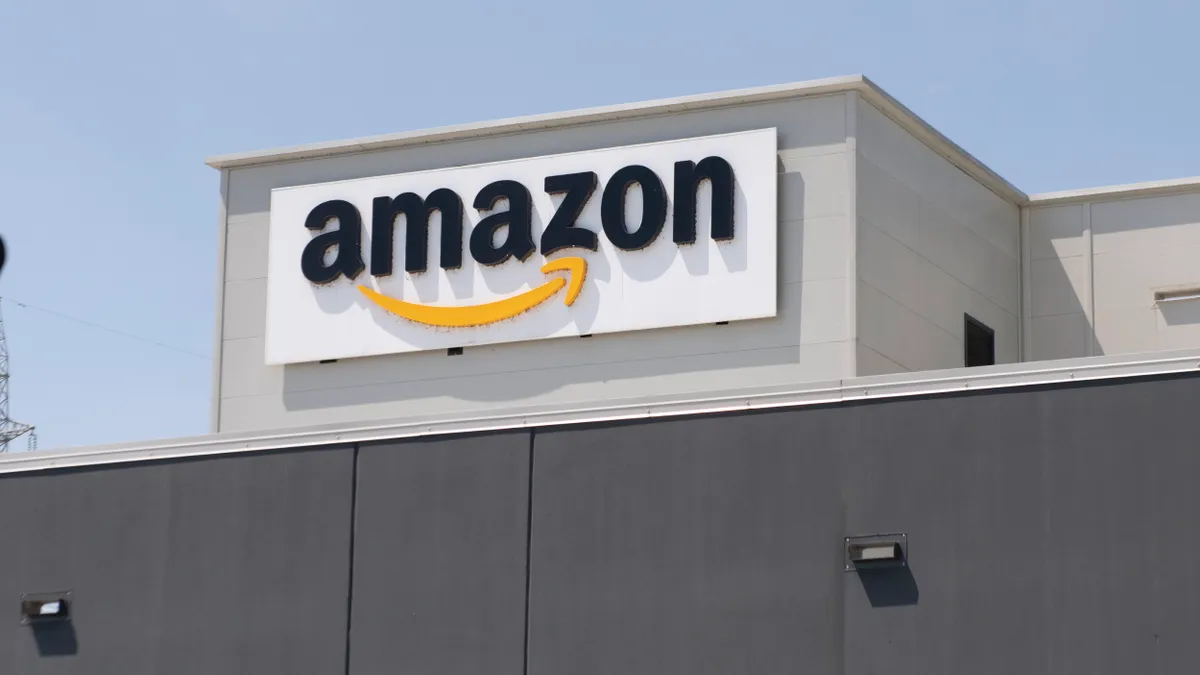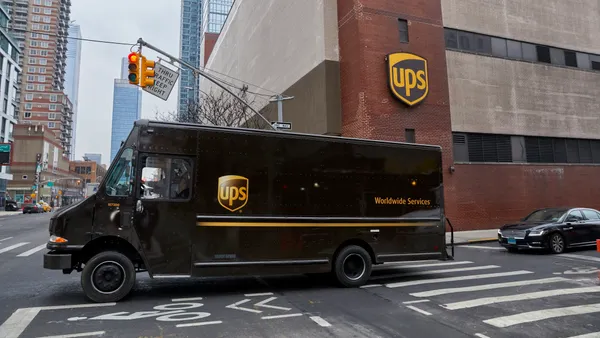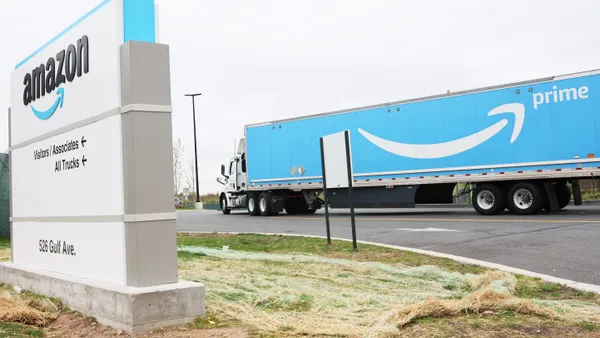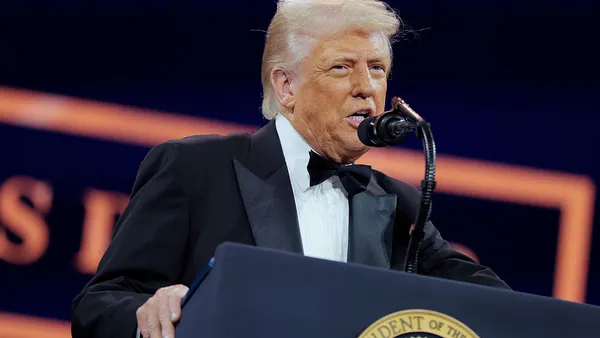Dive Brief:
- Amazon will again implement higher fees on its fulfillment services for third-party sellers during the peak holiday shipping season.
- The peak season Fulfillment by Amazon fees — active from Oct. 15 through Jan. 14 — can range from 20 cents to $2.50 more per unit than the non-peak charge, depending on the size of the item. They are calculated and charged when shipments leave company fulfillment centers.
- "As a result, if a product is ordered before October 15, but is shipped on or after that date, the peak fulfillment fee will apply," according to Amazon.
Fulfillment by Amazon fees jump during peak season
| Product | Size tier | Non-peak period fulfillment fee | Peak period fulfillment fee |
|---|---|---|---|
| Mobile device case | Small standard-size | $3.22 | $3.42 |
| T-shirt | Large standard-size | $4.84 | $5.14 |
| Baby cot | Small oversize | $12.67 | $13.67 |
| Monitor | Large oversize | $89.98 | $92.48 |
Source: Amazon
Dive Insight:
Amazon said in an announcement to sellers last week that the peak season fees are unchanged from 2022. Last year was the first time the company had instituted such a surcharge due to higher seasonal expenses.
"This seasonal fee is similar to those charged by other major carriers, and covers increased fulfillment and transportation operating costs during the busy holiday shopping season," Amazon said.
Businesses selling on Amazon had previously been shielded from added peak season shipping charges, which are standard at parcel carriers like FedEx and UPS. But as consumer demand eased and inflationary pressures grew last year, the company started to pass on the elevated costs it encountered.
Although Amazon saw net sales and income rebound YoY in Q2, sellers are still having to navigate new and higher fees.
Beyond the peak season fulfillment fees, businesses shipping their own products will also encounter higher charges soon. The company's Seller Fulfilled Prime program, in which businesses handle their own fulfillment while still offering one-day and two-day Prime delivery speeds, will add a 2% fee on each product sold starting Oct. 1, CNBC reported.
As it readies new fees, Amazon is continuing to trim costs in its sprawling fulfillment operations that many sellers lean on. One notable example is its shift from a national network to a regional network. CEO Andy Jassy said in an Aug. 3 earnings call that this transition has led to a 19% reduction in miles traveled to deliver packages to customers.
"When shipments come from fulfillment centers that are closer to customers, they travel shorter distances, which cost less in transportation, gets there faster and is better for the environment," Jassy said.














